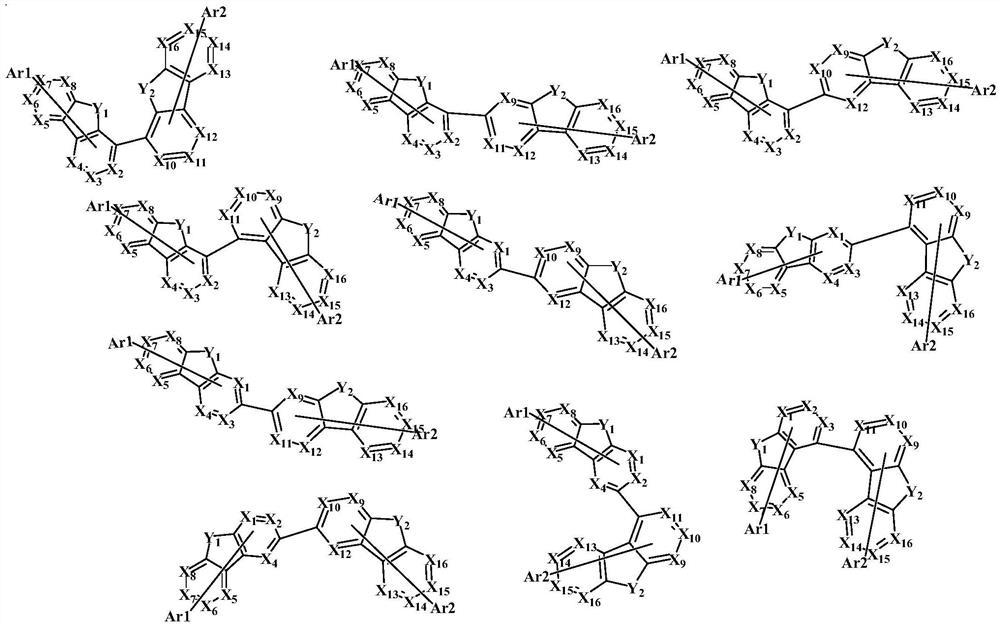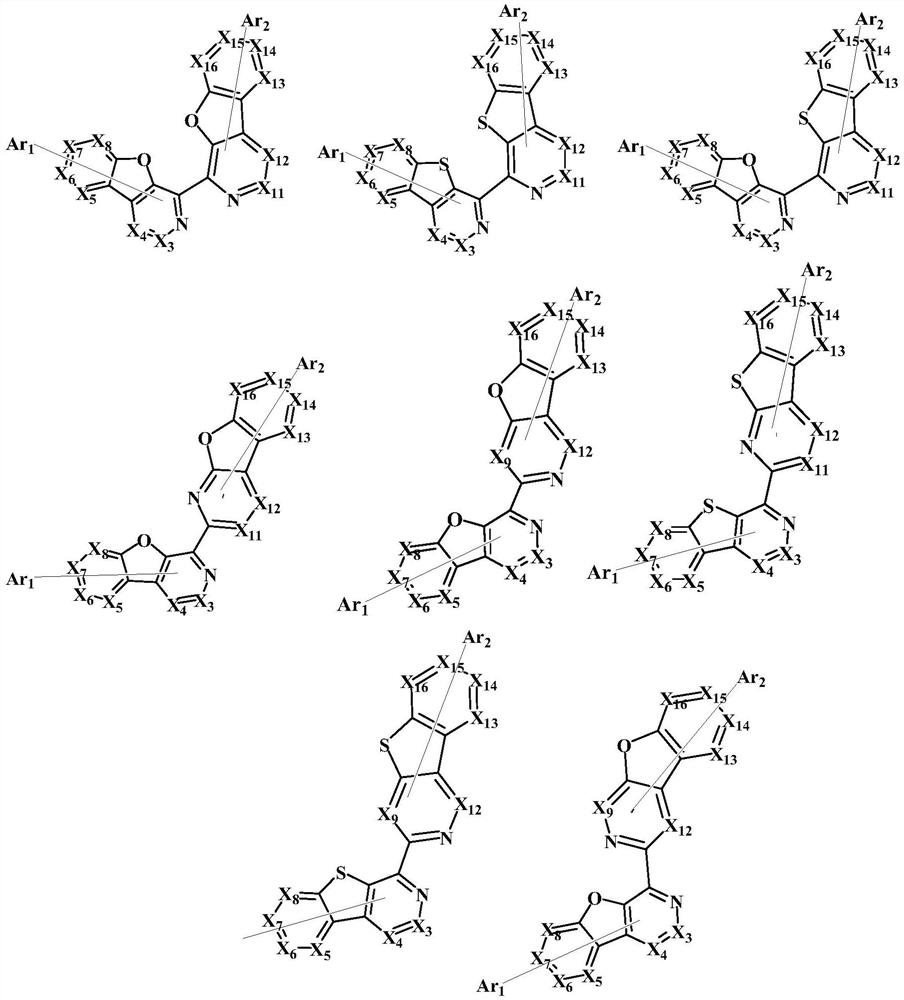Organic compound and application thereof
A technology of organic compounds and compounds, applied in organic chemistry, electrical solid devices, semiconductor devices, etc., can solve problems such as blocked entrances, difficult to control evaporation rate, small molecular weight, etc., to maintain injection and movement capabilities, and suppress drift drives Effect of voltage rise and suppression of metal movement
- Summary
- Abstract
- Description
- Claims
- Application Information
AI Technical Summary
Problems solved by technology
Method used
Image
Examples
Embodiment 1
[0085] The synthesis of organic compound P1, its structure is as follows:
[0086]
[0087] Its preparation method specifically comprises the following steps:
[0088]
[0089] 1) In a 100 mL round bottom flask, mix P1-1 (15 mmol) and potassium acetate (30 mmol) with dry 1,4-dioxane (60 mL), Pd(PPh 3 ) 2 Cl 2 (0.50 mmol) and pinacol diboronate (35 mmol) were mixed, and stirred at 90° C. under a nitrogen atmosphere for 48 hours. The resulting intermediate was cooled to room temperature, added to water, and filtered through a pad of celite. The filtrate was extracted with dichloromethane, washed with water, and dried over anhydrous magnesium sulfate. After filtration and evaporation, the crude product was purified by silica gel column chromatography. The product yields intermediate P1-2.
[0090] 2) In a 100 mL round bottom flask, mix P1-2 (15 mmol), P1-3 (15 mmol) and potassium carbonate (30 mmol) with dry THF (60 mL), NiCl 2 (dppe) (0.50 mmol) was mixed and stirred ...
Embodiment 2
[0096] The synthesis of organic compound P7, its structure is as follows:
[0097]
[0098] Its preparation method specifically comprises the following steps:
[0099]
[0100] 1) In a 100 mL round bottom flask, mix P7-1 (15 mmol) and potassium acetate (30 mmol) with dry 1,4-dioxane (60 mL), Pd(PPh 3 ) 2 Cl 2 (0.50 mmol) and pinacol diboronate (35 mmol) were mixed, and stirred at 90° C. under a nitrogen atmosphere for 48 hours. The resulting intermediate was cooled to room temperature, added to water, and filtered through a pad of celite. The filtrate was extracted with dichloromethane, washed with water, and dried over anhydrous magnesium sulfate. After filtration and evaporation, the crude product was purified by silica gel column chromatography. The product yielded intermediate P7-2.
[0101] 2) In a 100 mL round bottom flask, mix P7-2 (15 mmol), P7-3 (15 mmol) and potassium carbonate (30 mmol) with dry THF (60 mL), NiCl 2 (dppe) (0.50 mmol) was mixed and stirred...
Embodiment 3
[0107] The synthesis of organic compound P44, its structure is as follows:
[0108]
[0109] Its preparation method specifically comprises the following steps:
[0110]
[0111] 1) In a 100 mL round bottom flask, mix P44-1 (15 mmol) and potassium acetate (30 mmol) with dry 1,4-dioxane (60 mL), Pd(PPh 3 ) 2 Cl 2 (0.50 mmol) and pinacol diboronate (35 mmol) were mixed, and stirred at 90° C. under a nitrogen atmosphere for 48 hours. The resulting intermediate was cooled to room temperature, added to water, and filtered through a pad of celite. The filtrate was extracted with dichloromethane, washed with water, and dried over anhydrous magnesium sulfate. After filtration and evaporation, the crude product was purified by silica gel column chromatography. The product yielded intermediate P44-2.
[0112] 2) In a 100 mL round bottom flask, mix P44-2 (15 mmol), P44-3 (15 mmol) and potassium carbonate (30 mmol) with dry THF (60 mL), NiCl 2 (dppe) (0.50 mmol) was mixed and st...
PUM
| Property | Measurement | Unit |
|---|---|---|
| thickness | aaaaa | aaaaa |
Abstract
Description
Claims
Application Information
 Login to View More
Login to View More - R&D
- Intellectual Property
- Life Sciences
- Materials
- Tech Scout
- Unparalleled Data Quality
- Higher Quality Content
- 60% Fewer Hallucinations
Browse by: Latest US Patents, China's latest patents, Technical Efficacy Thesaurus, Application Domain, Technology Topic, Popular Technical Reports.
© 2025 PatSnap. All rights reserved.Legal|Privacy policy|Modern Slavery Act Transparency Statement|Sitemap|About US| Contact US: help@patsnap.com



